Whether in the city or the countryside, every time Tet comes, or when opening a business or partying, Vietnamese people look forward to the appearance of the bustling sounds and majestic appearance of lions and dragons from Qilin - Lion - Dragon art troupes.
Let's explore Qilin - Lion - Dragon and the characteristics of this special art form through the article below.
Origin and classification - when tradition crosses borders
Qilin - Lion - Dragon is a street art form originating from China, associated with traditional festivals such as Lunar New Year, processions of gods, opening ceremonies or peace prayers. Over time, this form was introduced to Vietnam and transformed into many versions by the local Vietnamese and Chinese communities - both preserving the inherent traditional features and incorporating the new breath of the locality.
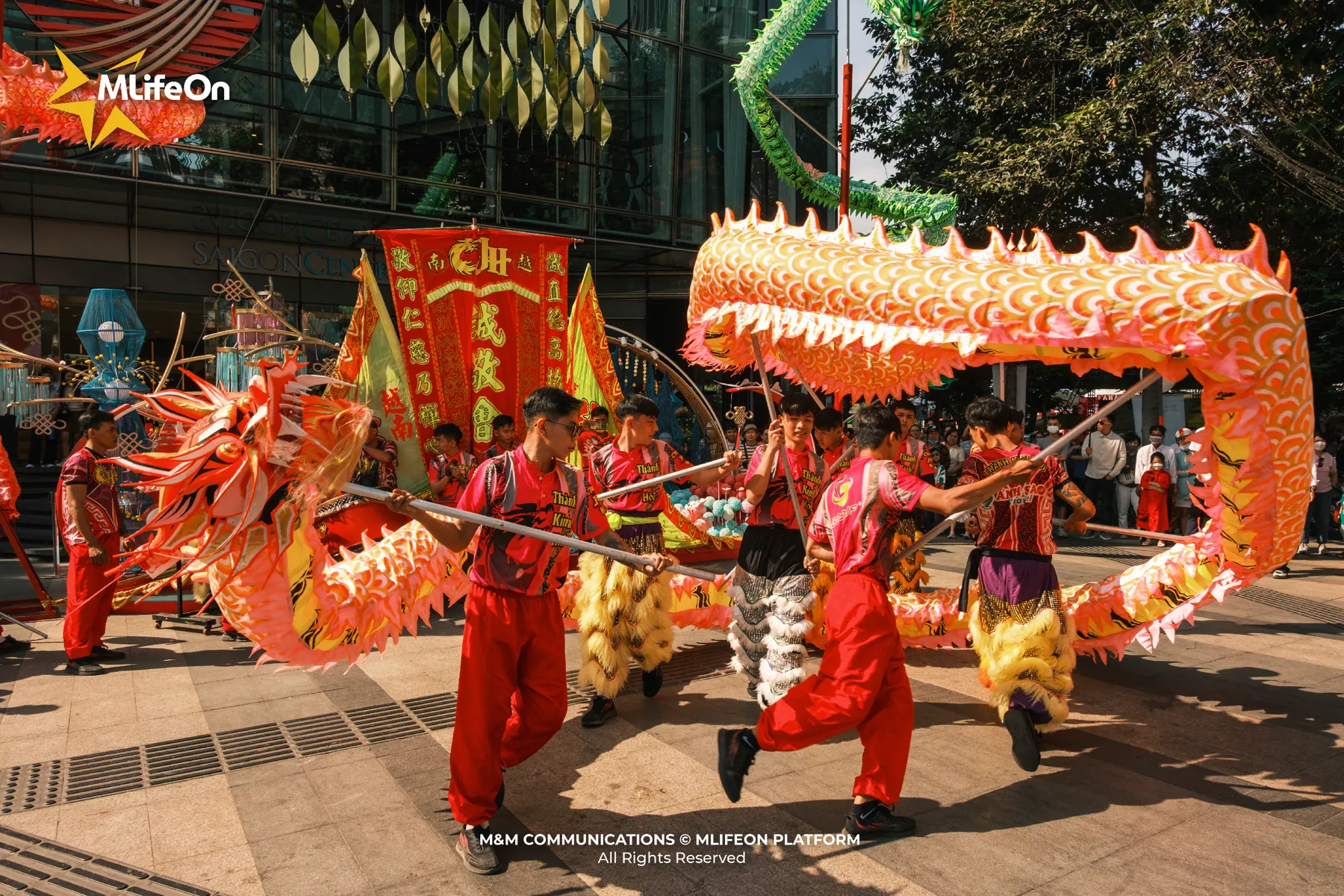

The beauty of this art form lies in the fact that: Although originating from China, the Qilin - Lion - Dragon is open and easy to import, so it has become an art form that does not belong to any particular nation or region, but is a fusion of Eastern cultures, meeting in the belief in beauty, strength and community spirit.
The classification of the art of Qilin - Lion - Dragon includes three groups:
-
Qilin Dance: symbolizes luck, fortune, prosperity and happiness. The image of a dancing lion is considered to bring joy and goodness to the homeowner, business or community.
-
Lion Dance: often symbolizes luck, prosperity, drives away evil spirits and brings peace and happiness. The image of a lion also represents martial spirit and solidarity and unity.
-
Dragon Dance: the dragon is long and graceful, often symbolizing luck, prosperity, strength and power, often appearing on major holidays.
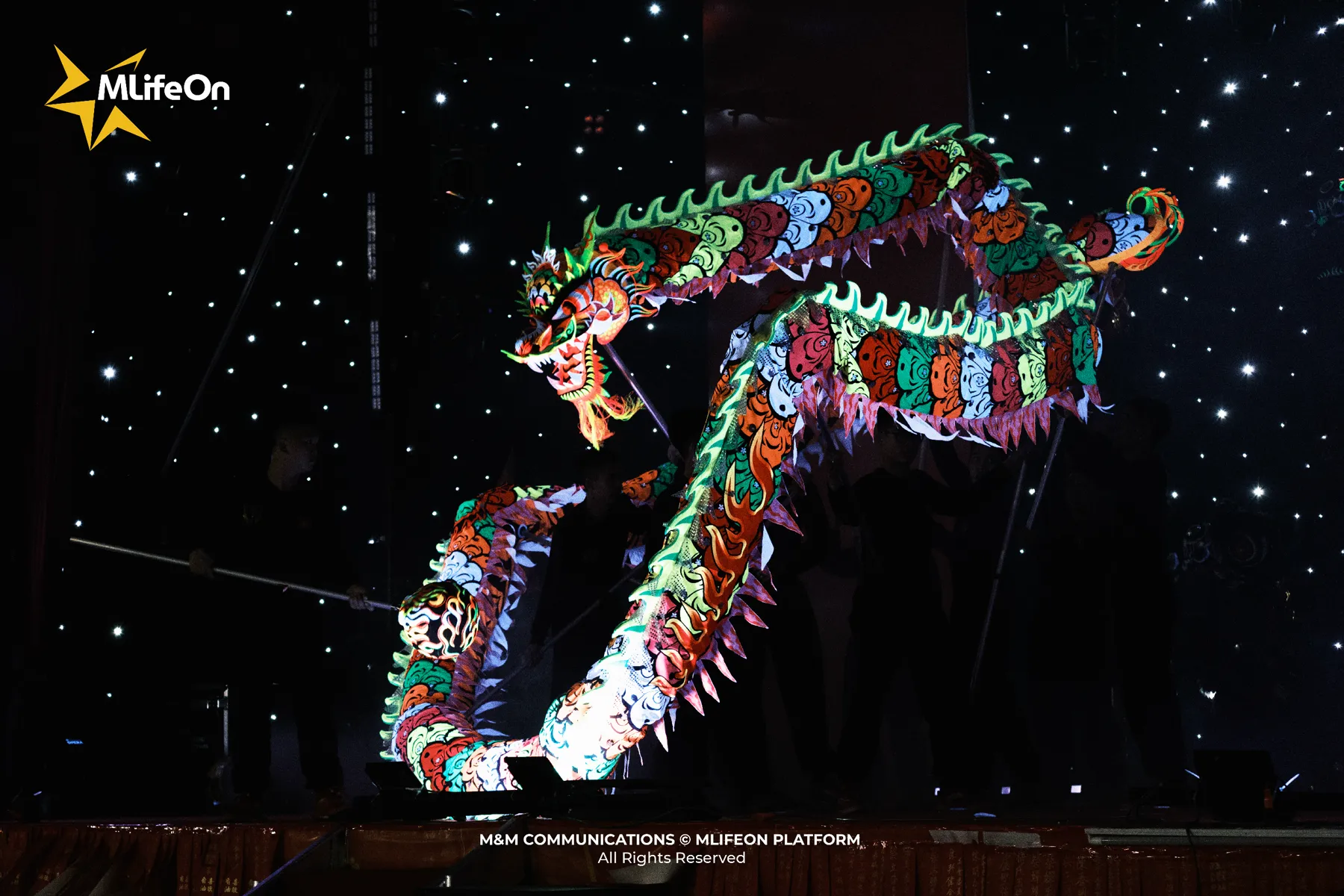
Qilin - Lion - Dragon in folk beliefs
In Vietnam, the Qilin - Lion - Dragon is not only a form of performance, but also a ritual with profound folk beliefs. People believe that the sound of drums and gongs, the appearance of the qilin, lion, and dragon will drive away evil spirits, open the way to welcome prosperity and fortune, especially at the beginning of the year, opening a new business, or welcoming the gods into the temple.
This meaning is especially clearly shown through the "khai quang diem nhan" ritual - an important ritual at the beginning of the new year of the Qilin - Lion - Dragon troupes.
Once I attended the "khai quang diem nhan" ritual of the Hai Nam Lien Huu Art Troupe held at Ba Thien Hau Pagoda, District 5, Ho Chi Minh City. In this ritual, the qilin and dragon heads are "dipped in eyes", that is, dipped in vermillion ink to "consecrate" - making the mascots have souls or the ability to "see". In addition to its spiritual significance, this ritual is also an announcement from the Hai Nam Lien Huu lion dance troupe to everyone - that the qilin dance troupe is ready for performances, bringing luck, fortune and joy to everyone.

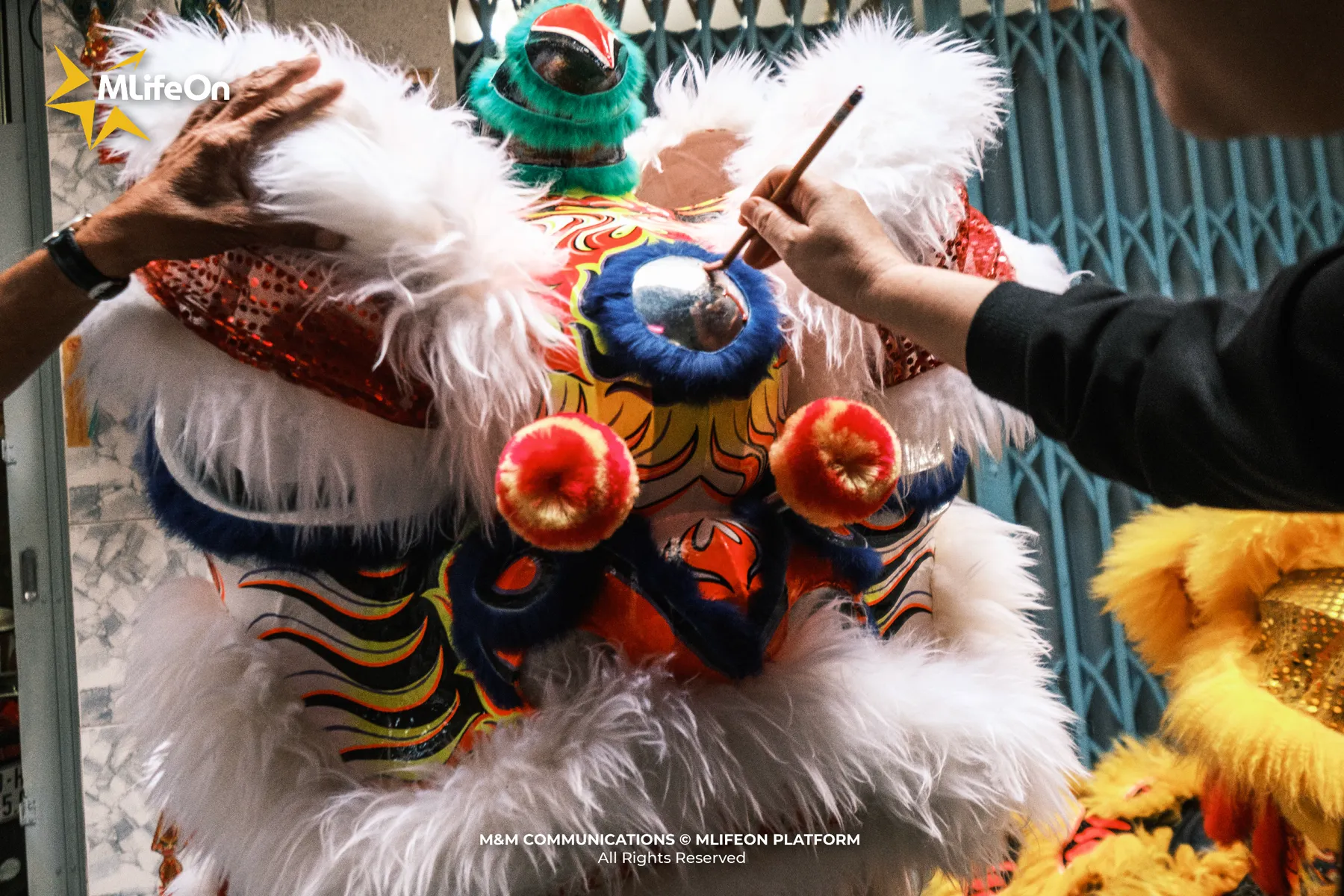
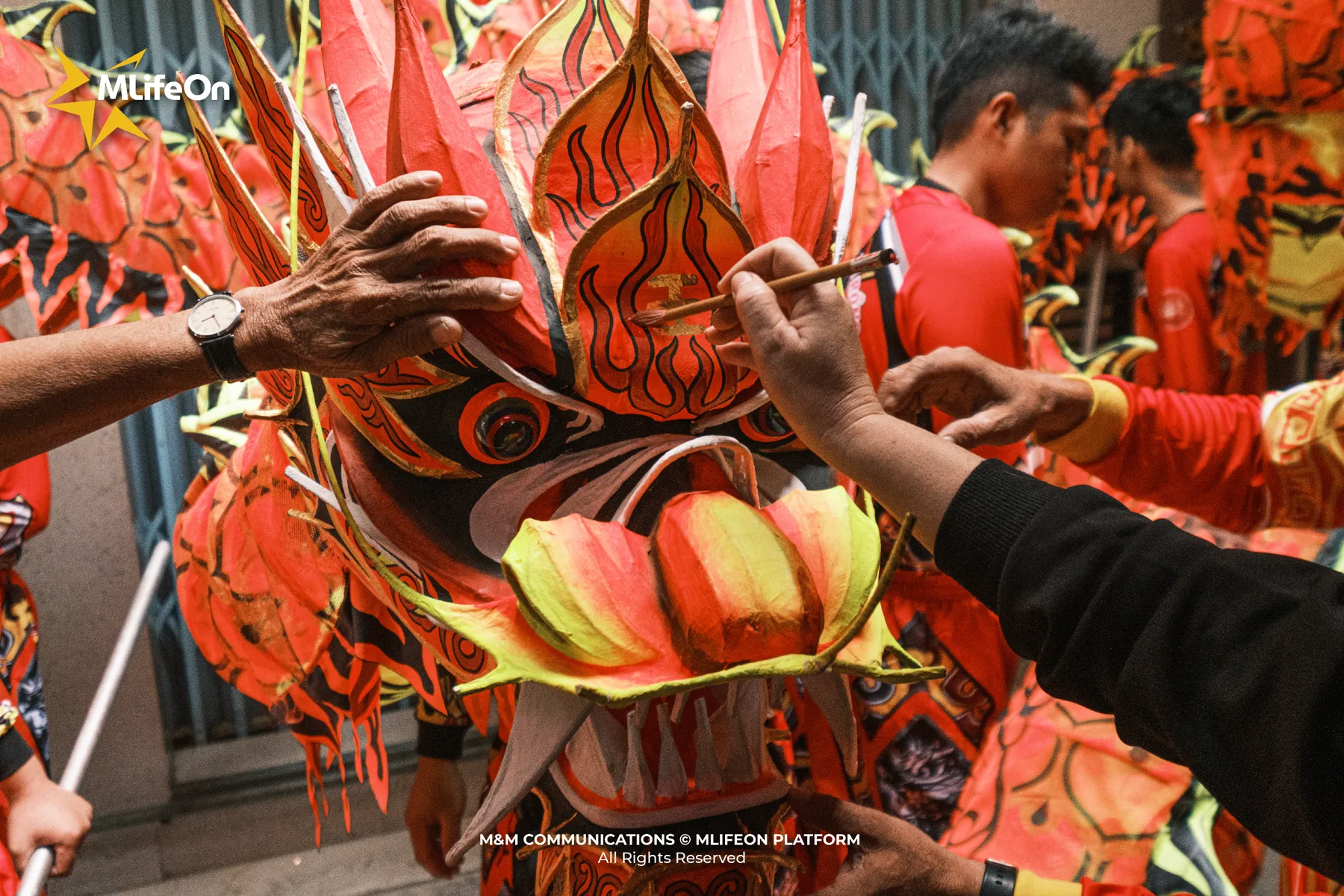
When the eye-opening ceremony takes place, the qilin and dragon are "eye-opened", when the drums sound, these sacred animals will dance - as a solemn way to greet the heavens and earth, and everyone.
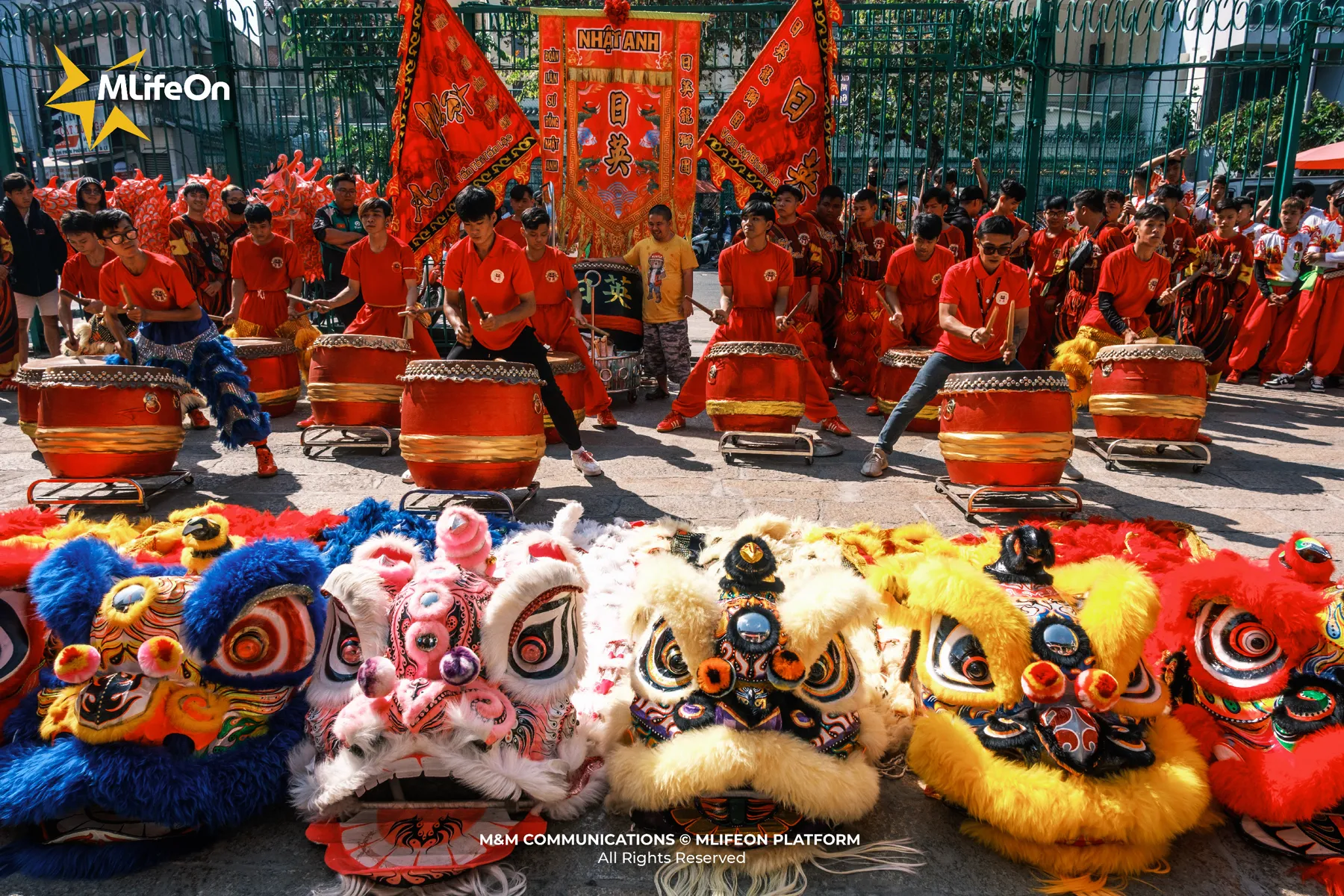
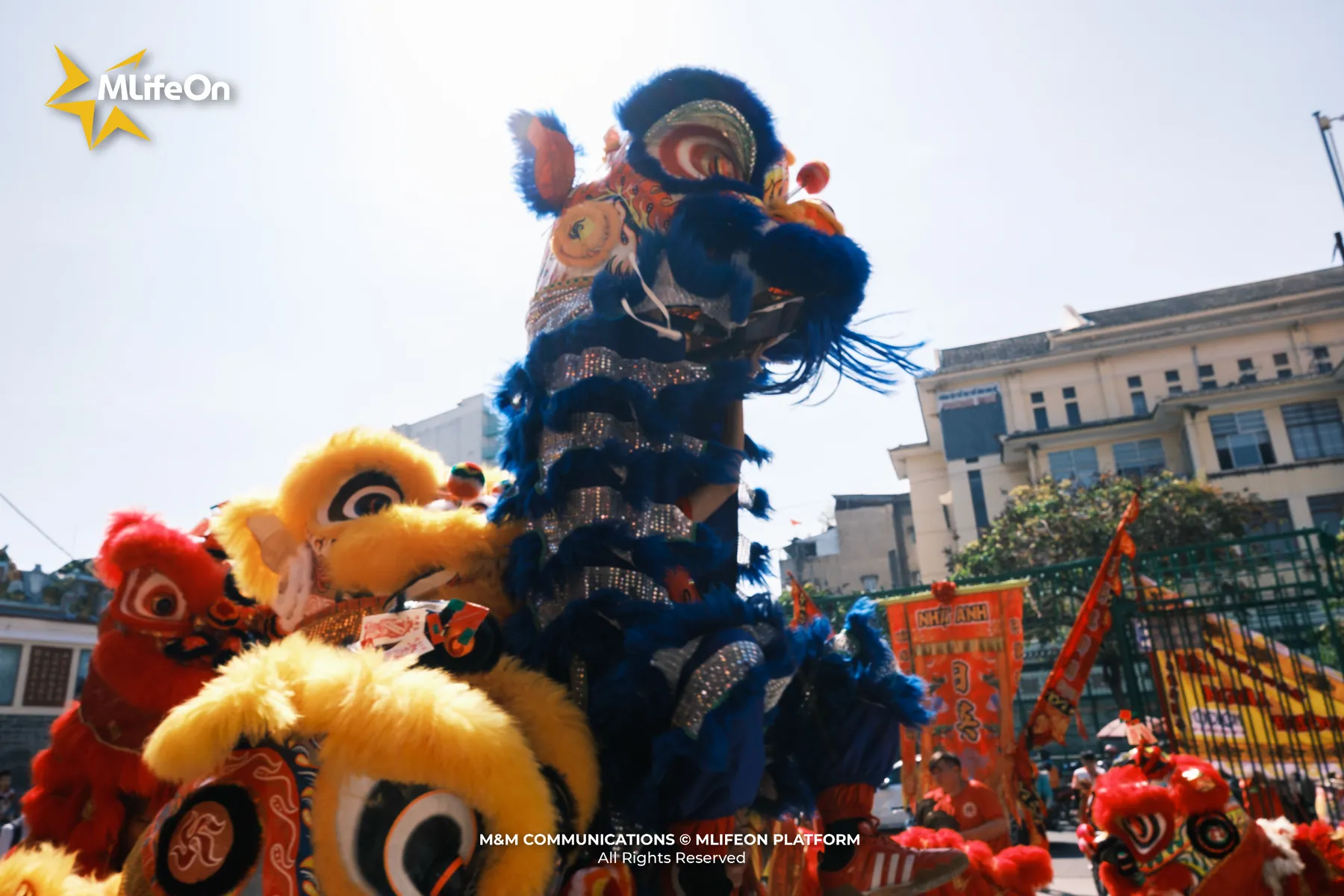
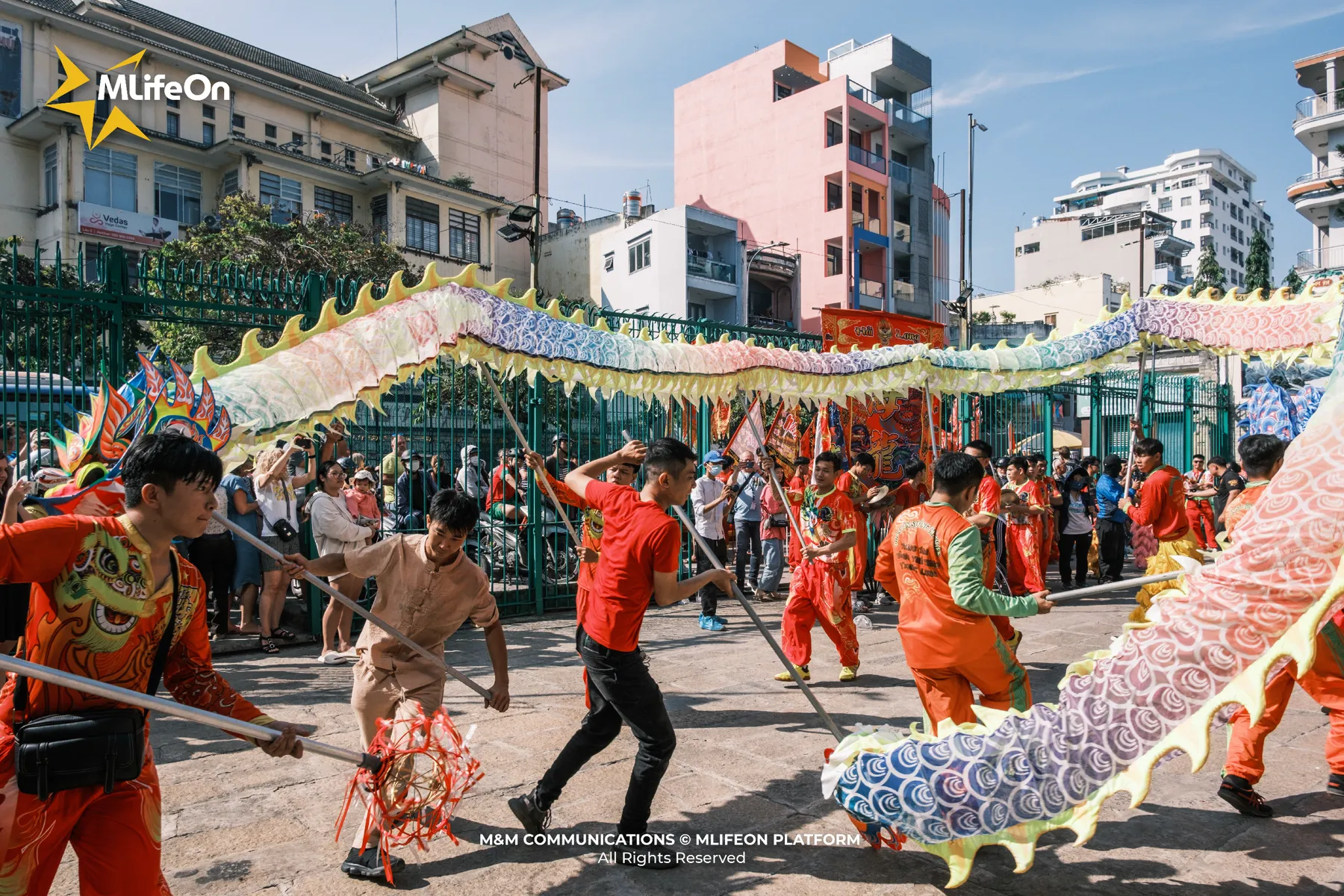
Art: The drum beat is the breath, the dance steps are the words
Qilin - Lion - Dragon is a complex art form: combining acrobatic movements, jumping, and rhythmic dancing, along with the skills of balancing, lion head expression, and accompanying music. The dancer not only needs to be flexible and strong, but also must have the dexterity and subtlety to convey emotions through each gesture of the mascot - through the blink of an eye, the movement of a foot, or the raising of the head, the humble bow.
Watching the Hai Nam Lien Huu Art Troupe practice, I have more opportunities to understand more about the Qilin - Lion - Dragon, about the people who work day and night hard on this dance form that is both artistic and cultural and communal.
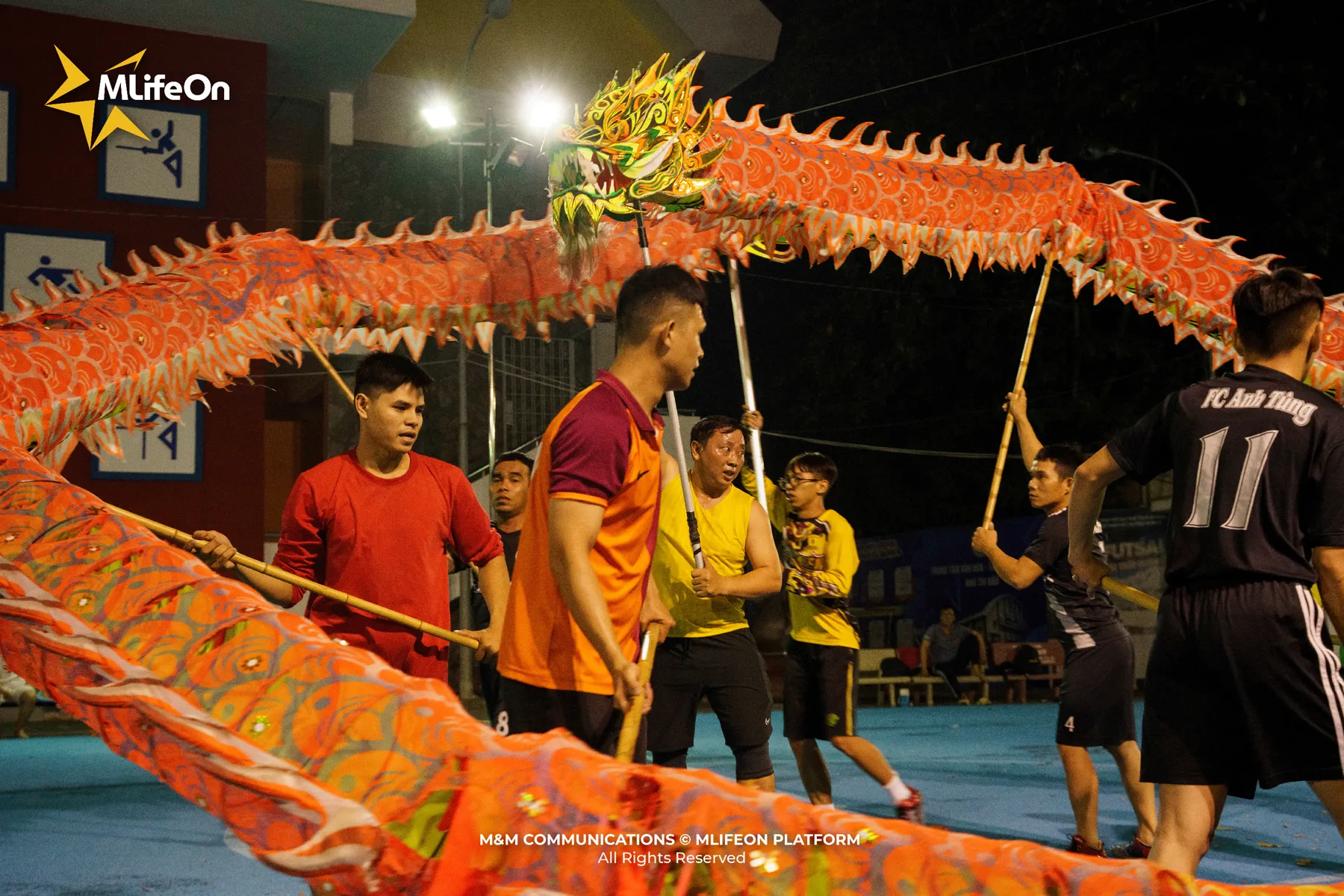
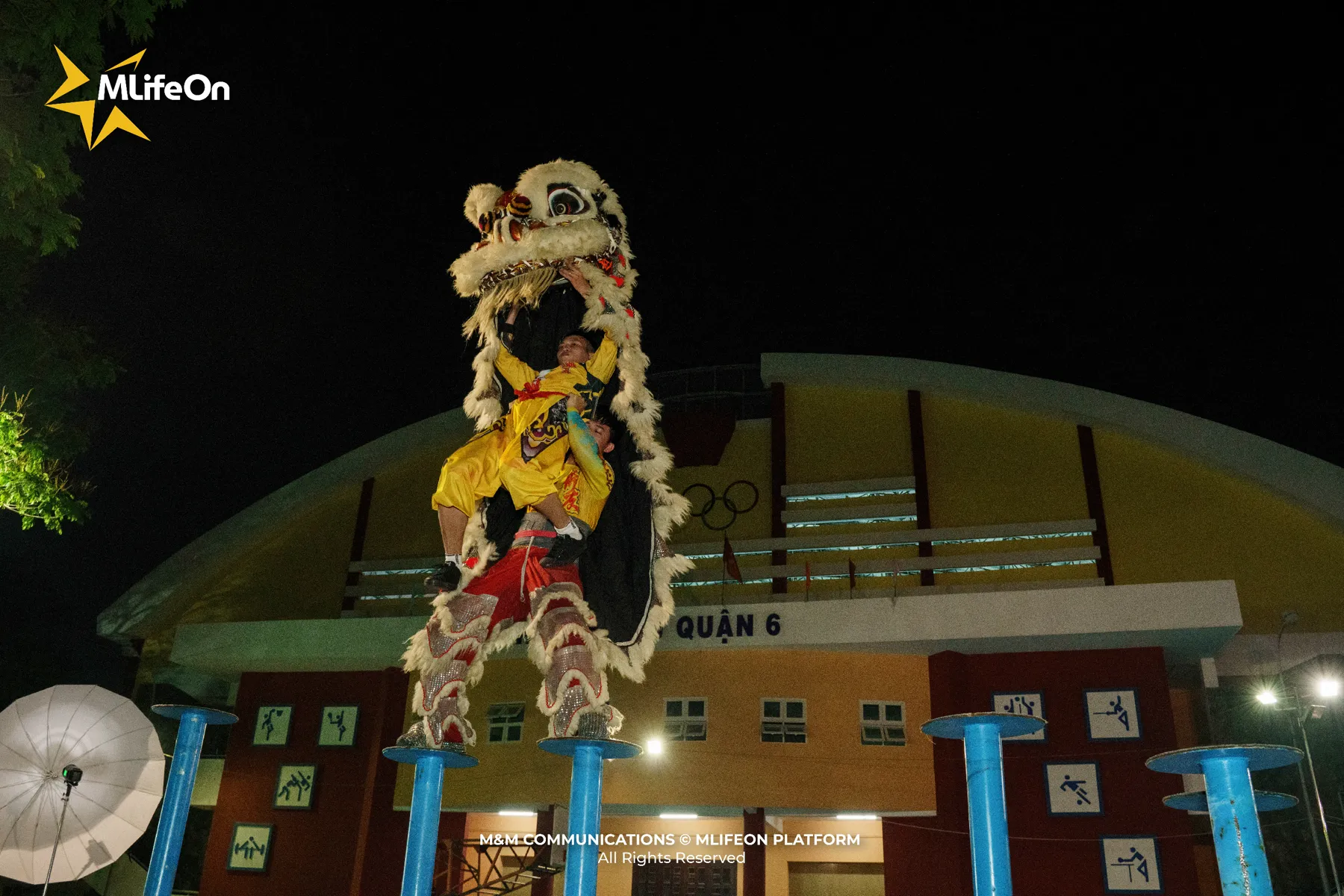
A qilin will be controlled by two people, and each gesture of the mascot needs to be coordinated. For example, when the qilin steps left, right, tilts its head, jumps over a high pole, ... the movements want to be beautiful, soulful and achieve proficiency, all must have the understanding of two people. As for the dragon dance, the number does not stop at two but dozens of people working together, rhythmically so that when the dragon curves, the formation is not disrupted, even though the gong and drum beats increase, the dragon then curves fiercely, but the curves are still smooth, strong and majestic.
It is not just practice, but an internalized performance - expressing faith through movement.
Qilin - Lion - Dragon is for everyone, not just anyone
The special thing about the Qilin - Lion - Dragon is that everyone can participate, from children to adults, from professional art troupes to ward and commune art troupes. This is where people gather, share, learn - connect through the beat of the drum, through cheers.
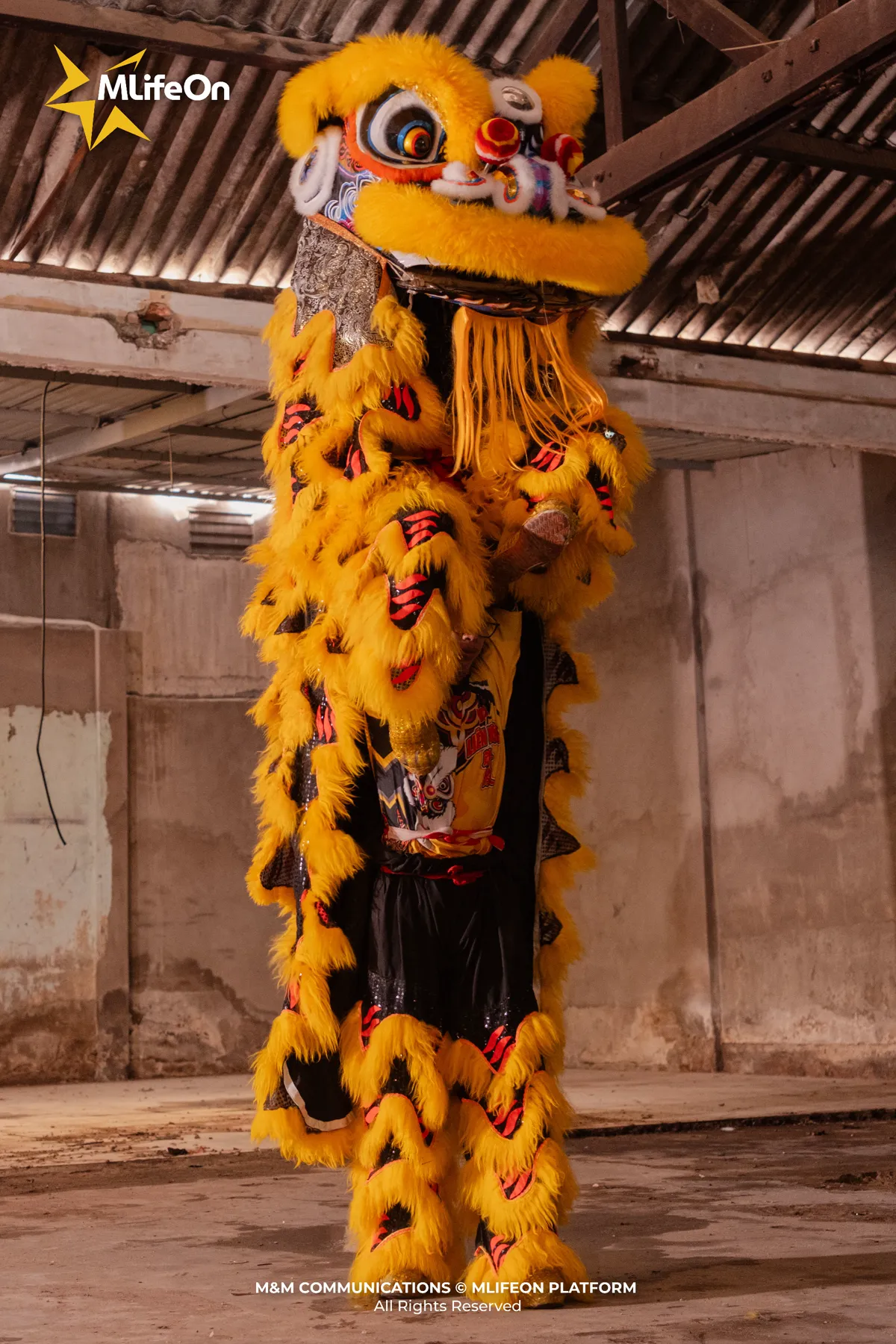

Qilin - Lion - Dragon is not just a performance - it appears at the exact moment when people need community connection the most: Tet Holiday, opening ceremony, village festival... When the Qilin - Lion - Dragon dances, the whole neighborhood opens its doors, congratulates each other, throws lucky money envelopes, and gives smiles. People who don't dance also participate - by watching, clapping, and offering drinks.
At the Hai Nam Lien Huu Art Troupe, I see that clearly. During the practice session, the little boy, although not yet trained in the movements, was instructed and encouraged by the older brothers, and given a spare drum to hold. Without anyone telling him, someone always ran to get a towel to wipe the lion's head or the poles used for dancing. Someone made jokes when the atmosphere became tense, someone meticulously checked the items brought out for practice... Everyone felt like they were part of the troupe, even though they were not professionally trained artists or had deep expertise.
Preserving and developing - so that the drums still echo in the streets
Today, the art of Qilin - Lion - Dragon is still maintained in many provinces and cities, especially during the Lunar New Year, Mid-Autumn Festival, and the opening of new houses. Many performing troupes have also brought this form into competitions and festivals nationwide, turning it into an art form that is both traditional and has modern vitality.
Preserving the art of Qilin - Lion - Dragon is not simple, because it is not only about preserving performing skills, but also about preserving a part of the soul of folk beliefs. But in order for this soul to be preserved and continue to develop, there must be people willing to accompany Qilin - Lion - Dragon.

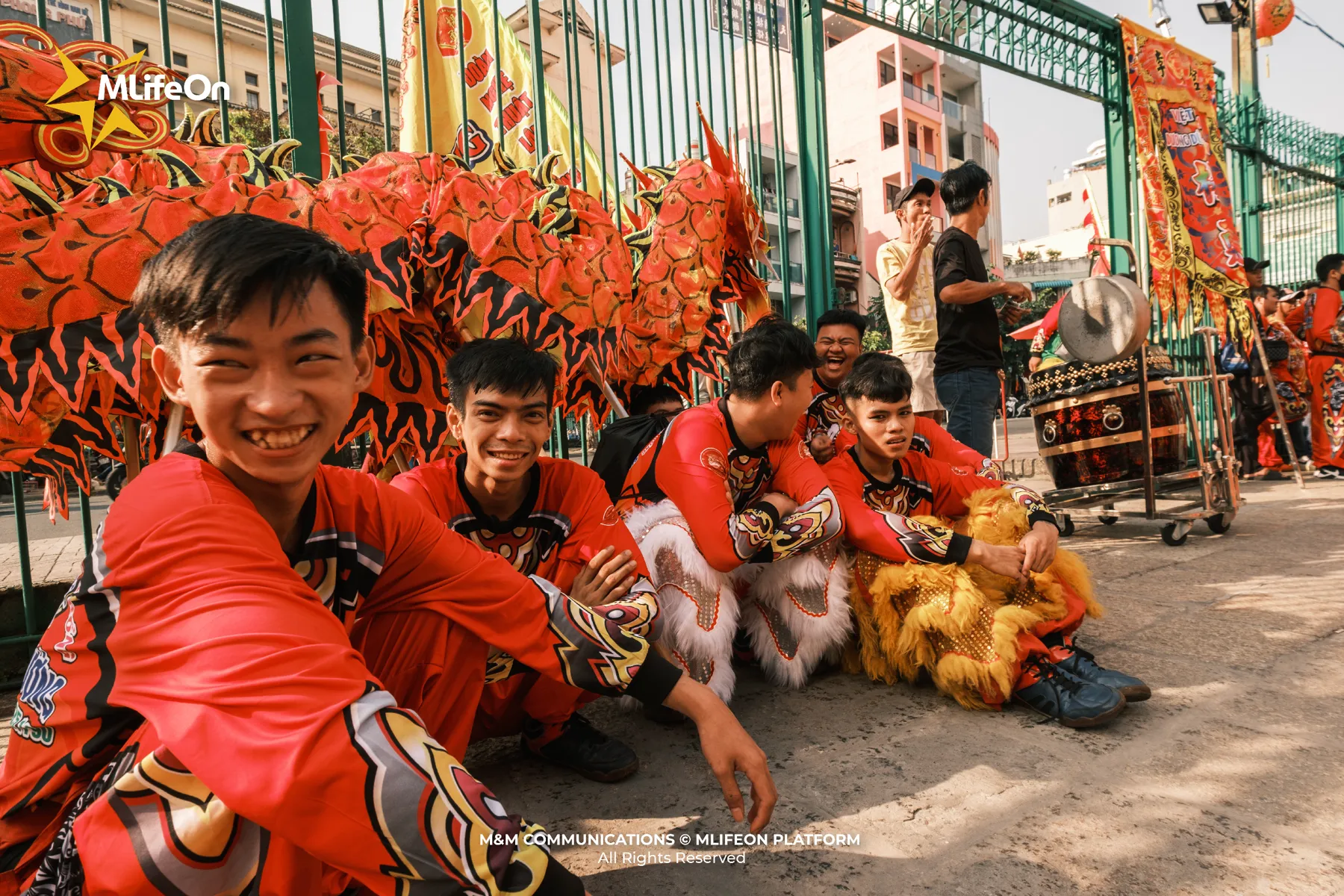

First, it is necessary to have artisans who make the towers, lions, and dragons. They are the ones who understand the core of traditional techniques, and breathe into each line the solemnity and spirituality of the symbol. Next is the dance team trainer, they are not only the ones who train the physical strength and movements of the members, but also teach the will and sacred meaning so that the Qilin - Lion - Dragon can be expressed most fully in each ritual - from the way of greeting the ground to the way of greeting the audience. And finally, for this art form to continue to exist, it is the audience - the audience who do not just stand outside and observe, but know how to appreciate, listen, to understand that the Qilin - Lion - Dragon dance is not a simple performance, but a part of the cultural identity of the community that needs to be preserved and passed on.
Conclusion
Qilin - Lion - Dragon is not only an art form to watch, but also to feel - to feel through the sound of the drums, the eyes, through the kicks and curves of the lion's head gliding through space.
In the middle of a crowded city, when the lion dance troupe appears, people often stop - not just to watch, but to touch a part of the belief, a part of the community's attachment. And that is when we see: folk art is not old - but is a common breath, resounding forever through each festival season.
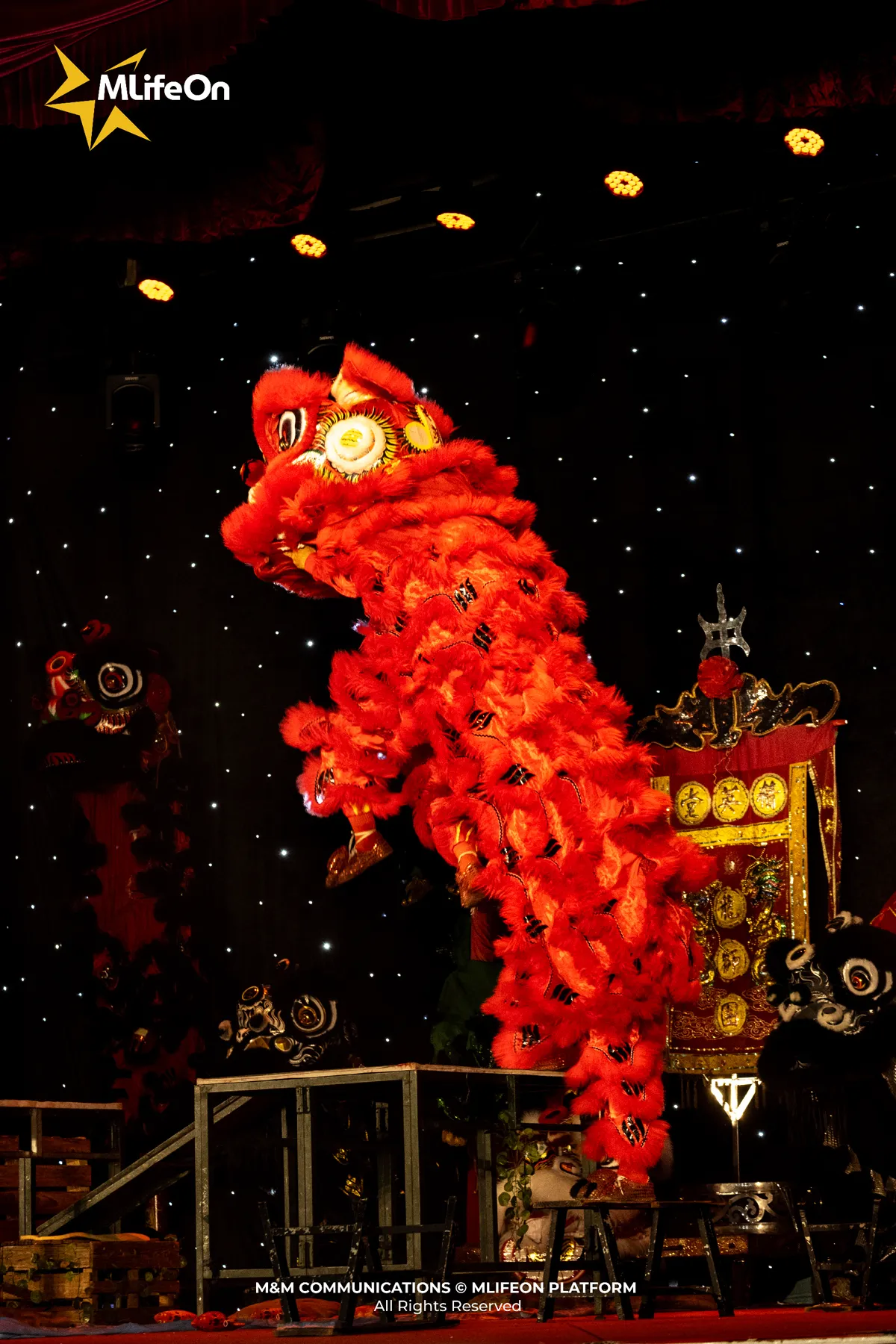
—----
CREDIT:
MLifeOn collab with Hai Nam Lien Huu Dance and Dragon Dance Troupe
- Photography: Luan Nguyen
- Content: Giang Huynh
- Design: Trung Huynh





















